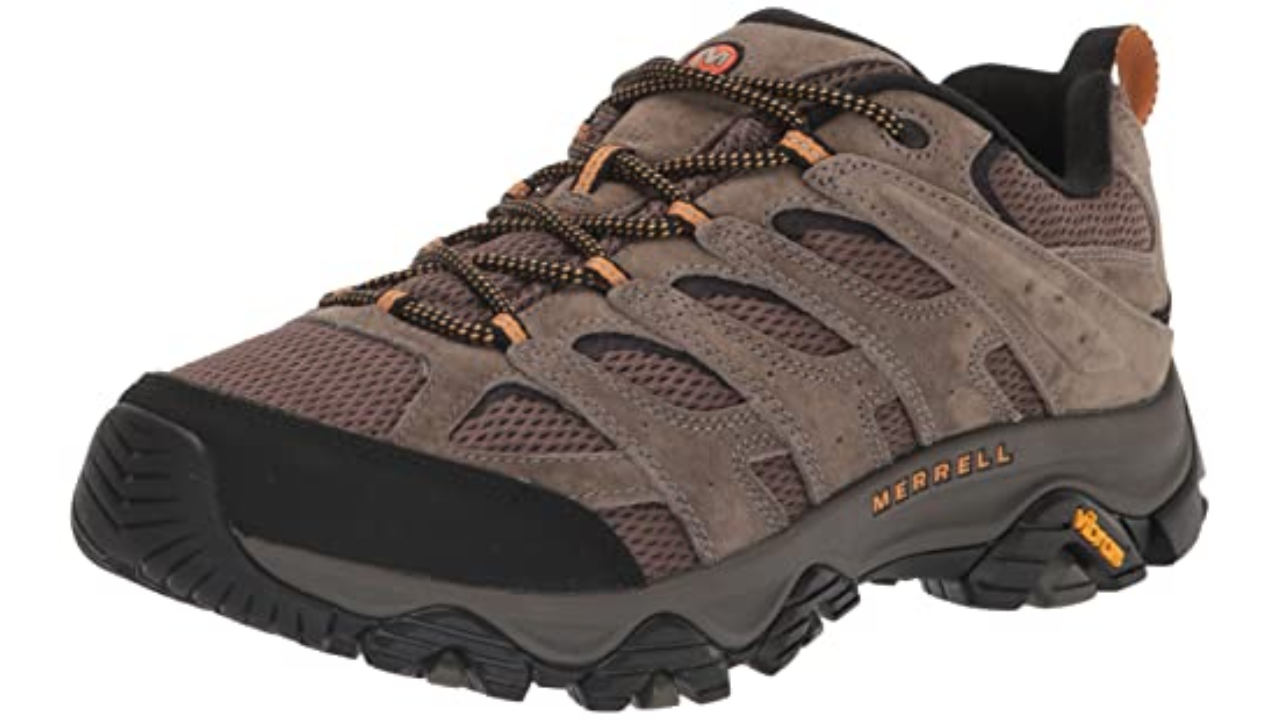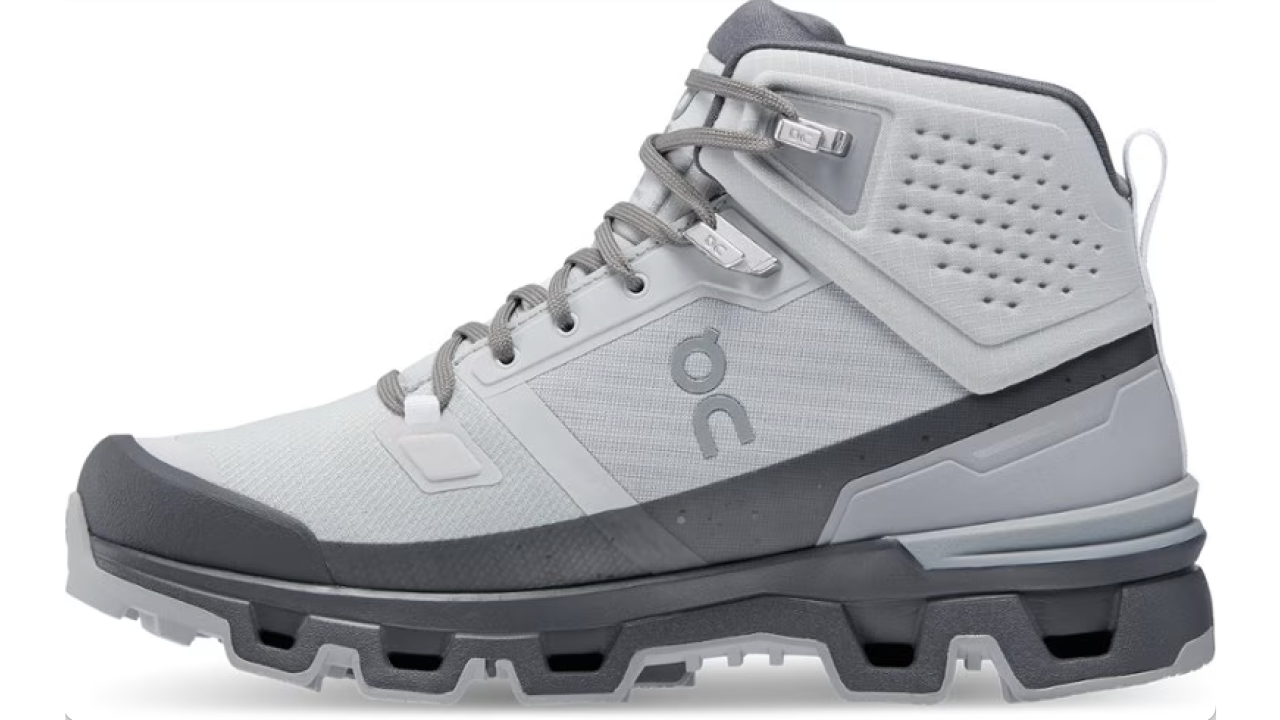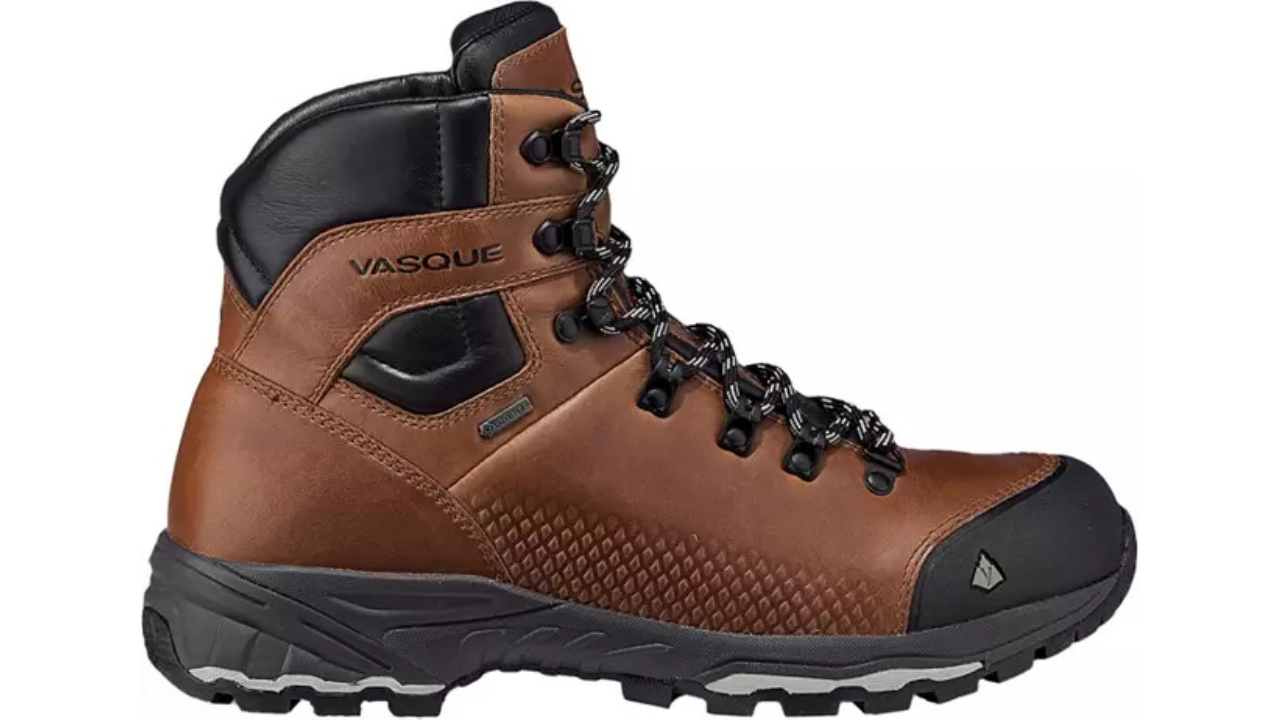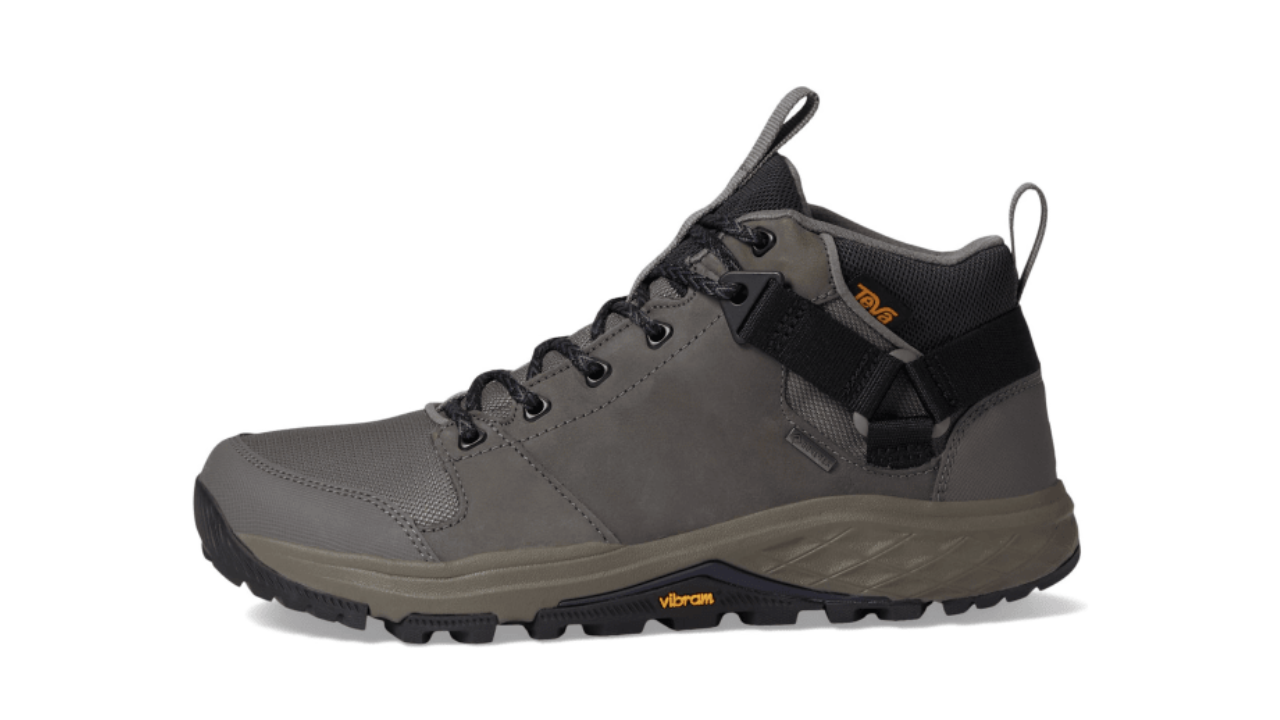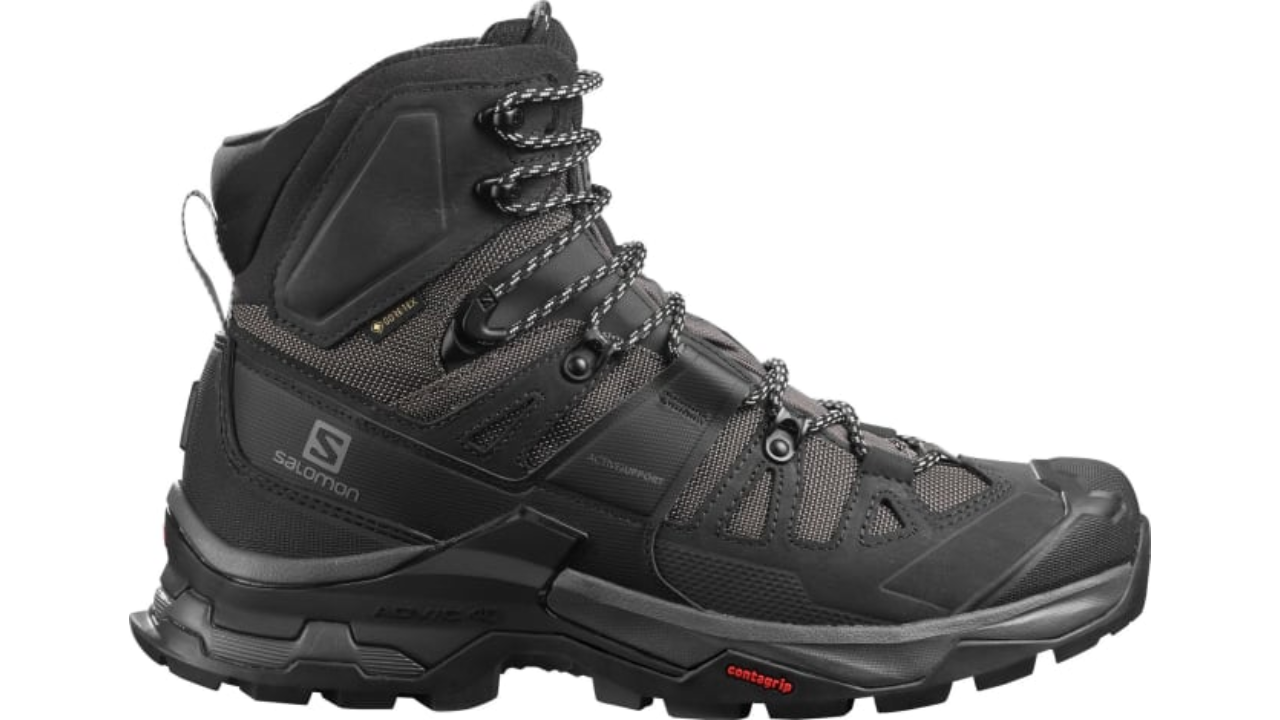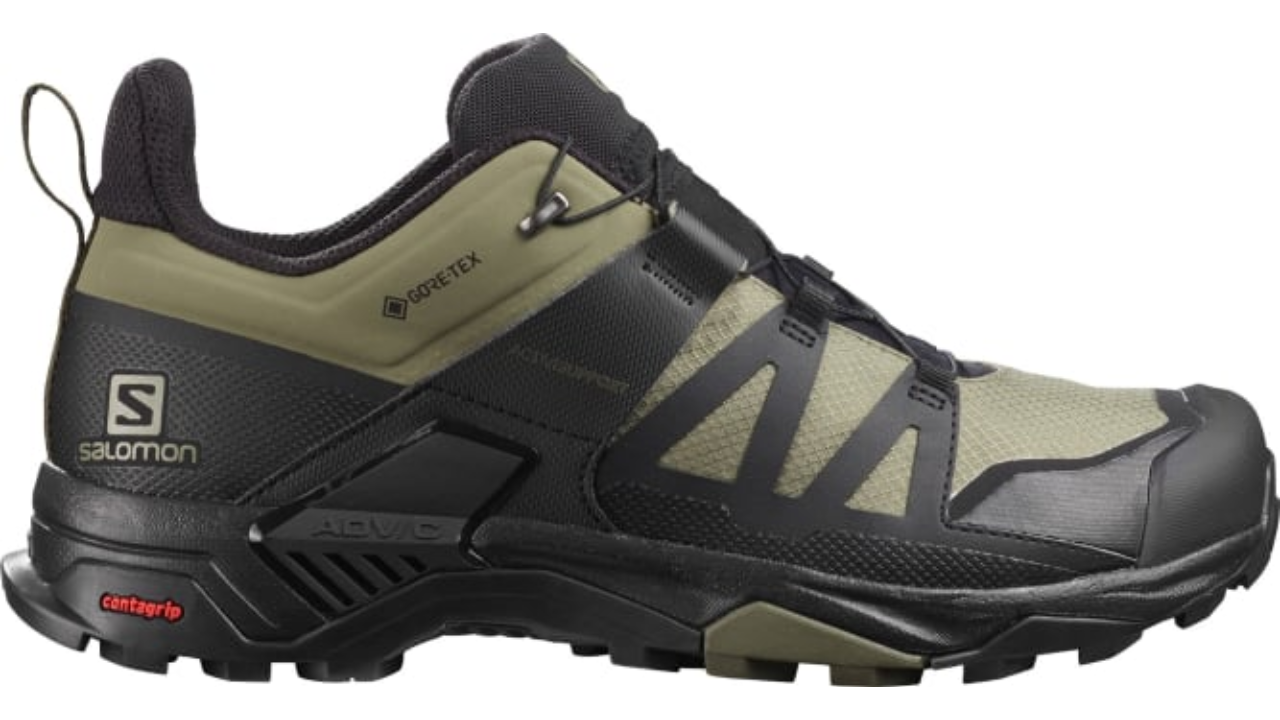We independently evaluate the products we review. When you buy via links on our site, we may receive compensation. Read more about how we vet products and deals.
The 12 best hiking boots for 2024, according to outdoor enthusiasts
Grab a new pair of hiking boots before hitting the trails, from Merrell to Salomon and Hoka
Any hiker knows how essential it is to find the right pair of shoes before hitting the trails. Running into rough terrain without a sturdy pair of boots can lead to foot pain, blisters and other uncomfortable ailments — some that can even land you in the hospital. According to Kenton Matthaei, a gear expert with Backcountry, reliable hiking shoes need to be "supportive, preferably lightweight and breathable. Shoe preferences can vary greatly from hiker to hiker, but these main factors are what contribute to a good hiking shoe." Luckily, we've put together our list of the best hiking boots and shoes for your next trek from brands like Merrell, Salomon and Hoka.
Best overall hiking boot
Merrell Moab 3 Hiking Shoe
Best podiatrist-approved hiking boot
On Cloudrock 2 Waterproof Mid Hiking Boots
Most comfortable hiking boot
Vasque St. Elias FG GTX Hiking Boots
Best waterproof hiking boot
Teva Grandview GTX
Best hiking boot for ventilation
Topo Athletic Pursuit 2
Best hiking boot for extra cushioning
Hoka Stinson ATR
Most durable hiking boot
Salomon Quest 4 GORE-TEX Hiking Boots
Best hiking boot for support
Salomon X Ultra 4 GTX Hiking Shoe
Best for trail running
Topo Athletic Terraventure
Best for hiking in the snow
Hoka Anacapa Mid
Best for boot for mountain hiking
Salomon X Ultra 4 Mid GTX Hiking Shoe
Best boot for ankle support
Hoka Kaha 2 GORE-TEX
We spoke with various experts to find out which hiking boots will meet your needs, from traditional hiking boots to waterproof boots, shoes made for rocky terrain and more. Our top picks are for all people who love the outdoors, including daily hikers, off-trail explorers and mountaineering adventurers alike. And if you're looking for more gear to enhance your outdoor adventures, check out our guides to the best water shoes and the best leggings with pockets.
Table of contents
Best overall hiking boots
Shoe or boot: Shoe | Insole material: Nylon | Outsole material: Rubber | Waterproof: No | Weight: 2 lbs.
Moabs have been ruling best hiking shoes lists forever; is it any wonder they've wowed us, too? Topping the list of editors, experts and shoppers alike, Merrell's Moab 3 Hiking Shoes are among the most popular hiking shoes around. Famous for their out-of-the-box comfort, the Amazon bestsellers are also super supportive and extra cushioned to keep your feet happy all day long. The webbing along the tongue keeps debris from entering your shoe, while the protective toe cap keeps your feet safe from harm. They also boast a Vibram TC5+ rubber sole that provides excellent traction and a molded arch shank and shock-absorbing heel for added support.
Yahoo Style's Executive Editor Nicole Sforza has been wearing Merrell's since college and listed these as her fave pair. She even wears them off the trails when she needs a little extra support too. She recalled: "I once had a bad foot issue and had to wear supportive hiking boots (even when not hiking!!!!) and the doc recommended these." The sporty kicks also made Cris Hazzard, hiking expert of HikingGuy.com's list of favorites because "they're tough, grippy and very comfortable."
- Comfortable
- Supportive
- Affordable
- Good traction
- Not waterproof
Other top hiking boots we recommend for 2024
Shoe or boot: Boot | Insole material: Foam and polypropylene plates | Outsole material: Rubber | Waterproof: Yes | Weight: 2 lbs. 2.1 oz.
On Cloud Nine is more like it! According to Dr. Hillary Brenner, DPM at NYC Private Medical, the key to a good hiking shoe is "a balance of lightweight/support/stability, cushion/functionality, stiffness/breathability and durability," and these On's Cloudrock 2 Waterproof Mid Hiking Boots find that sweet spot, and then some. Their Flexlock lacing system guarantees a secure and comfortable fit, while their patented Missiongrip rubber outsoles and built-in shanks provide the stability and grip you need to tackle trails in both wet and dry conditions.
The boots weigh in at less than 2 lbs., so they won't drag you down, and they have EVA foam midsoles for added cushioning. Plus, they're waterproof, so you can wear them in the rain and snow. One shopper raved, "Took these out for the first time today on a tough seven-mile hike. They were very comfortable."
- Comfortable
- Waterproof
- Cushioned
- Durable
- Expensive
Shoe or boot: Boot | Insole material: EVA/TPU shank | Outsole material: Rubber compound | Waterproof: Yes | Weight: 2 lbs. 15 oz.
Drink in the beauty of that Cognac-colored leather ... and stay comfortable on even the most grueling trails. Gabaccia Moreno, executive director of the Outdoorist Oath, recommends these because they're "not only super stylish but also very comfortable. I've owned three pairs that lasted me several years and hundreds of miles of backpacking, hunting and hiking. These do require a break-in period, but it's worth it because the leather on these is beautiful and comfortable."
Our Home and Garden Writer, Kristin Granero, is also a fan of Vasque boots because they were comfortable and provided great traction as she hiked through Yosemite National Park, thanks to cushioning pods in the insoles and Vibram Frontier outsoles.
- Waterproof
- Comfortable
- Good on all terrains
- Supportive
- Expensive
Shoe or boot: Boot | Insole material: EVA foam | Outsole material: Nylon shank | Waterproof: Yes | Weight: 1 lb.
When you're planning a day hike that may have rain in the forecast, grab a pair of these trusty Tevas. Employing waterproof leather uppers to protect your feet against all types of weather conditions, Grandviews also boast Gore-Tex Leaf bootie waterproofing to seal out the elements and keep your feet as dry and comfortable as possible. They even have a quick-dry webbing system throughout and a water-repellent finish to prevent water from seeping through.
Aside from being weatherproof, these have wider toe boxes to give your feet more space, and responsive polyurethane footbeds for extra comfort and cushioning. Bonus: Their patented Vibram Megagrip outsoles will keep you from slipping and sliding on wet terrain. "I just hiked about 20 miles up and down muddy/snowy mountains in these and I must say, I am shocked by the comfort," raved one shopper. "The wide toe is probably the best feature on this boot. It's also warm and definitely waterproof. I'm in love and just bought my boyfriend the same pair."
- Lightweight
- Waterproof
- Protective
- Quick drying
- Pricey
Shoe or boot: Shoe | Insole material: Foam | Outsole material: Synthetic | Waterproof: No | Weight: 11 oz.
Keep feet dry and airy with these well-ventilated — and expert-approved — hikers. Sounds counterintuitive, but while a waterproof shoe will help water from seeping in, a hiking shoe with good ventilation is also essential for keeping your feet dry. "Wearing a well-vented shoe with a wicking sock will dry your feet quicker and means you're not sloshing around with water trapped in your shoes," Hazzard told Yahoo Style. He added: "My go-to shoe this year has been the Topo Athletic Pursuit. It's roomy, light, grippy, and vents well."
In addition to ample airing, the hiking shoes also boast a protective bumper toe, a cushioned footbed and midsole and foam padding around the ankle collar and under the tongue to prevent unwanted rubbing and painful blisters. What's more? They weigh only 11 oz. — that's crazy light!
- Breathable
- Grippy
- Comfortable
- Padded
- Not waterproof
Shoe or boot: Shoe | Insole material: CMEVA | Outsole material: Rubber | Waterproof: Not specified | Weight: 11 oz.
Anatomical support, plush insoles and excellent traction make these a popular option. When Hazzard needs a little extra cushioning for a long day on the trails, he says he reaches for these trail-running Hokas. That's thanks to their Compression Molded EVA midsole. Stinsons also have the brand's signature Meta-Rocker for extra forefoot support and a TPU-reinforced toe cap for added durability.
The mesh uppers are also moisture-wicking and breathable. "I feel I'm floating on air when I have these on. They're the most padded, comfy shoes you can wear for long hikes. Very happy with them," wrote one of Zappos' hundreds of five-star reviewers.
- Cushioned
- Supportive
- Great traction
- Durable
- Pricey
Shoe or boot: Boot | Insole material: EVA foam | Outsole material: Rubber | Waterproof: Yes | Weight: 2 lbs. 14.4 oz.
Looking to make a long-term commitment to the hiking game? Check out these beasts from Salomon. Moreno has been wearing her Quest 4s for over three years now and keeps going back to them because they "perform amazing on trails but also in cross-country environments, and are the most durable boots I've ever owned. They breathe great, though waterproof, and I trust every step I take with them. My favorite thing about them, and why they are my top boots, is that they did not require a break-in period for me at all."
She's worn them everywhere from Continental Divide hunting expedition to a trek to the base camp of Sagarmatha (Everest) and said she would do it all again in the same pair of boots. That's likely thanks to their Gore-Tex waterproofing, Contagrip rubber outsole that provides maximum traction on mixed terrains, and a high-rise design that offers more-than-ample ankle support.
- Waterproof
- Durable
- Supportive
- Great on all terrains
- Expensive
Shoe or boot: Shoe | Insole material: Foam | Outsole material: Rubber | Waterproof: Yes | Weight: 13.8 oz.
A standard-bearer for stability and comfort, Backcountry gearhead expert, Kenton Matthaei, listed these as one of his top picks because they are the "best middle ground between a boot and a trail runner" and provide the support you need for a full day on the trails. The Contagrip outsole has chevron-shaped lugs to help you trek through wet, dry, hard and loose surfaces, while the "mobile wings" help hold your feet in place for extra support.
Also: Their Gore-Tex waterproofing keeps your feet nice and dry and patented SensiFit lacing system lets you find a custom, comfy fit. "Comfortable with great support. Makes the difference for traversing gravel and branches. Ideal for low challenge hiking up to the point you need a boot," raved one happy customer.
- Supportive
- Waterproof
- Grippy
- Comfortable
- Pricey
Shoe or boot: Shoe | Insole material: Polyurethane, ethylene vinyl acetate | Outsole material: Not specified | Waterproof: No | Weight: 10.2 oz
These sleek trail runners were also at the top of Matthaei's list. Their dual-density midsoles, Ortholite insoles and Vibram Megagrip outsole are just a few of the reasons these stylish shoes are one of his top picks. The breathable mesh upper has drainage ports to let out any water you may have taken on during a storm or while crossing streams. He said they are also gaiter-compatible if you want to clip one on for even more protection from mud and water. (What are gaiters, you ask? These things.)
Besides boasting a roomy toe box, Terraventures also have flexible ESS plates to protect your feet from bruising as you run on top of sharp roots, rocks and other types of debris.
- Good for running
- Grippy
- Comfortable
- Lightweight
- Not waterproof
Shoe or boot: Boot | Insole material: Polyurethane | Outsole material: Rubber | Waterproof: Yes | Weight: 15 oz.
Planning a hiking trip in the winter? Be sure to have a pair of these packed! "In the snow, I like Hoka Anacapa Mid GTX Hiking Boots. They feel like trail runners but offer the extra protection I need in cooler temperatures," Hazzard told Yahoo Style. The boots are made with Leather Working Group Gold–certified waterproof nubuck leather and have been treated to work with PFC-Free water repellency to keep snow, slush and water from seeping in.
Their Vibram Megagrip soles boast 5mm lugs that keep you stable on slick trails, while their extended heel provides stability and an overall smooth ride. Shoppers also say they are great at keeping your feet warm in cooler weather. "These are absolutely perfect! I did an eight-mile strenuous/wet hike in Yosemite National Park, and these were very comfortable — amazing grip, and kept my feet warm the entire time," wrote one.
- Waterproof
- Ample protection
- Keeps you stable
- Comfortable
- Pricey
Shoe or boot: Boot | Insole material: EVA | Outsole material: Rubber | Waterproof: Yes | Weight: 14 oz.
Your new best friend for conquering gnarly hills and mountains. While most hiking shoes will help you tackle flat terrain, if you're heading to a trail with a lot of ups and downs, you need a pair that offers extra grip or traction, like these babies. Their Quicklace system offers one-pull tightening for a secure fit, while their OrthoLite sock liner and stitch-free upper provide a comfortable ride.
The Contagrip rubber sole grips wet and loose terrains easily and they even have Descent Control Technology to help you with complicated downhills. "I'm in Norway now. The whole day up and down mountains in the rain, and they stayed dry and performed great. They are a little bit wide in the toes, which is good for wiggle room," wrote one five-star reviewer.
- Great traction
- Grippy
- Comfortable
- Supportive
- Pricey
Shoe or boot: Boot | Insole material: Rubberized foam | Outsole material: Not specified | Waterproof: Yes | Weight: 1 lb. 3 oz.
These mid-risers are designed to prevent an unfortunate twist from hobbling you all the way back home. These Hoka boots have a traditional lace-up closure that offers a secure fit, an abrasion-resistant toe cap and heel for added protection and an Anatomical Achilles construction with a heel pull tab that makes them easy to put on and take off. Perhaps best of all, shoppers say the "ankle support is flawless."
Outdoor enthusiast and Hoka global advocate Nicole Snell called the Hoka Kahas her "all-time favorite hiking boots," adding, "I first tried them in 2019 and fell in love! I put over 800 aggressive miles on that pair before I had to retire them and get a new pair. The Kaha is comfortable and cushioned right out of the box. It feels like you're hiking on clouds! They are also completely waterproof. I've crossed many rivers, streams and puddles with my Kahas and hiked in the rain, and the water just beads off. I've never once ended up with wet feet or blisters. They are also rugged and can handle all types of terrain. I've hiked around the world with these boots and even summited Mt. Whitney as part of a 50-mile section hike." We think she likes them!
- Lightweight
- Ample support
- Comfortable
- Durable
- Expensive
How we chose the best hiking boots
To find the best hiking shoes and boots available, we consulted with hiking experts, outdoor enthusiasts, podiatrists and our own team of shopping experts to get their top tips for shopping for durable and comfortable hiking boots. With their tips in mind, we researched dozens of hiking shoes and boots for both men and women. We also considered the customer reviews and tested several options ourselves to see how we liked them.
Factors to consider when choosing hiking boots
Wesley Trimble, the creative director of the American Hiking Society, told Yahoo Style there are four main factors to look for when shopping for a pair of hiking shoes: fit, traction, support and choosing protection. "Hiking footwear is literally the foundation of the hiking experience, and no gear is as important as great-fitting, supportive and adequate-traction footwear," he said, before adding, "Hiking footwear needs to provide adequate support for the intended terrain, distance and the amount of weight being carried."
For a flatter, less challenging trail, he said "a simple cross-trainer athletic shoe may suffice," but as you advance on to steeper more uneven terrain, "it's more important to have a shoe or boot with good deep lugs on the outsole to provide adequate traction." And, he warned, don't forget to choose an option that'll shield your feet from hazardous flora, fauna and obstacles: "Different regions will have different factors to account for, but a protective shoe will generally decrease abrasions and injury from rocks, brush, thorns, prickles, insects and even the sun."
Above all, chimed in Dr. Hillary Brenner, DPM (doctor of podiatric medicine) at NYC Private Medical, a hiking shoe "needs a balance of light weight/support/stability, cushion/functionality, stiffness/breathability and durability."
Features and materials
It will all depend "on what type of hiking you'll be doing, the weather conditions, and trail conditions," said outdoor enthusiast and Hoka Global Advocate, Nicole Snell. For trail runners and other flexible hiking shoes, "mesh is great for breathability and keeping the weight of the boot/shoe low," she added.
As you shop for more heavy-hitting hiking boots, Matthaei recommends looking for an option with a full grain leather upper "due to the excellent durability, abrasion resistance, and water resistance. Most commonly used in the classic style boots intended for carrying heavy loads, they provide additional support for traveling through rugged terrain."
Keeping feet as dry as possible is also key to decreasing the number of blisters and other foot ailments you'll get over long distances, so if you'll be in rainy or snowy conditions, you might want a pair with Gore-Tex protection to keep the water out. If, however, you'll be trekking in dry, desertlike climes, it's smart to opt for a pair of well-ventilated shoes that will help with sweating. "The majority of the time, I wear breathable, well-ventilated footwear," said Trimble. "For years I used waterproof hiking boots, and I'd get blisters several times each season. After switching to breathable footwear with a wider toe box, I've nearly eliminated blisters. In my last 5,000-plus trail miles, I can almost count the number of blisters on one hand." (Or foot.)
Insole and outsole
Hiking expert Cris Hazzard of HikingGuy.com suggests looking for footwear with Vibram outsoles, because "the material does an excellent job for all-around traction." He added, "If you're hiking in really muddy or loose terrain, you might want to find a shoe with more oversized lugs that are spaced out, but for most folks, the standard Vibram outsole that comes with your shoe will do the trick."
As for insoles, Kenton said the best options "provide a range of support including heel and arch. And they should also assist in absorbing shock and moisture." If you don't like the insoles that come in your hiking shoe or boot, Hazzard recommends replacing them with these popular Superfeet numbers that provide ample support and cushioning.
Lacing systems
The short answer? Yes! Says Snell: "Lacing systems often don't get the attention they deserve! How you lace your shoes/boots can change the fit of the footwear. It gives you options if you're wearing thick socks vs. thin socks and can help make adjustments to the shoe's fit if you need more or less stability based on your own physiology or trail conditions."
Hiking boot FAQs
When should you opt for a shoe over a boot, and vice versa?
"Boots provide more support than shoes overall, but that doesn't mean all boots will work for you," explained Gabaccia Moreno, executive director of the Outdoorist Oath. "But, honestly, this one comes to trial and error, which isn't feasible for all people due to the high cost of gear. But once you have a few seasons in, you'll know what and when it works best for you."
According to Snell, choosing a shoe versus a boot depends on a few factors. "How long is your hike, how much gear are you carrying, and what type of terrain can you expect?" she said. "Shoes are great if you prefer lighter weight, more flexibility and more breathability. The trade-off is a bit less stability and the likelihood of getting more rocks/dirt inside your shoe (unless you're using gaiters)." She added: "Boots are great if you need a bit more stability, support and a higher collar to protect your ankle from the elements. If you’re okay with a bit more weight, boots can be more cushioned as well as having thicker soles to withstand heavier pack/gear weights."
Do you need specific shoes for specific types of trails?
Most experts say it's not necessary to have different shoes for different trails, as most have the versatility for all types of terrain. Instead, the deciding factor on what to wear is usually the conditions of the trail on the day of your hike.
Our team of experts:
Cris Hazzard, hiking expert of HikingGuy.com
Nicole Snell, Outdoor Enthusiast and Hoka Global Advocate
Wesley Trimble, the creative director of the American Hiking Society
Kenton Matthaei, Backcountry gearhead expert
Dr. Hillary Brenner, DPM at NYC Private Medical
Gabaccia Moreno, executive director of the Outdoorist Oath
The reviews quoted above reflect the most recent versions at the time of publication.








